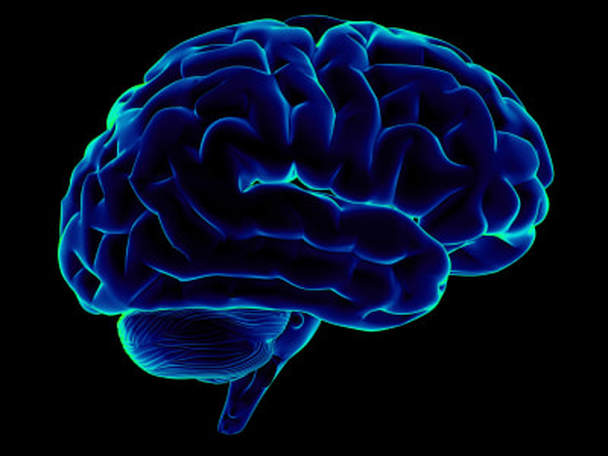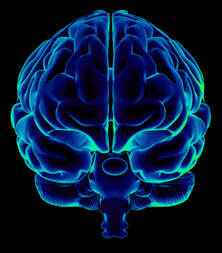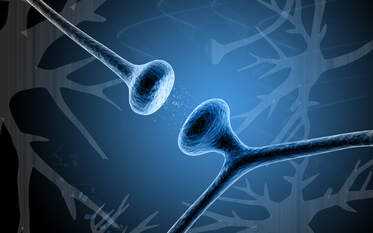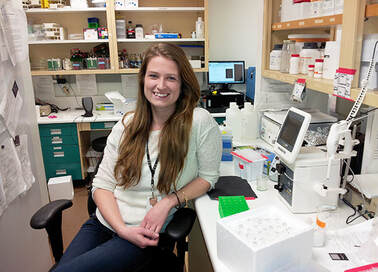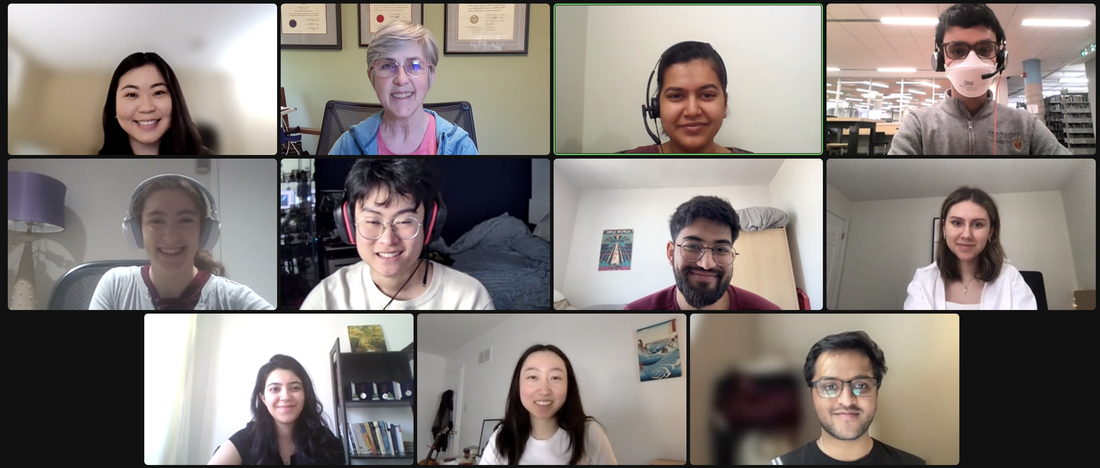We study how the human brain develops and change across the lifespan.
Explore the Visual Neuroscience Laboratory
and learn more
and learn more
Studying brain development is the key to understanding how we think, see, hear and feel.
Our lab is where students experience science's power to develop their own potential,
and have fun doing it.
Want to learn more about us?
Check out our current playlists (hint: read the titles).
Lab Rules
Grad Students
PI
The Lab
Ph.D. Student
MSc Student
Our lab is where students experience science's power to develop their own potential,
and have fun doing it.
Want to learn more about us?
Check out our current playlists (hint: read the titles).
Lab Rules
Grad Students
PI
The Lab
Ph.D. Student
MSc Student
In my lab, we study development of the human visual cortex. More than 20 areas in the human cortex process visual information and our studies are answering important questions about how those areas develop.
- We have found that healthy brain development continues into the 4th decade of life.
- We have linked cognitive and perceptual changes with molecular changes in the brain.
- We know that there is much more to learn about how the human brain develops.
We are exploring how normal and abnormal experience affects developing synapses and plasticity in the brain.
We use cellular and molecular tools to measure the expression of neural proteins, especially proteins involved in neuroplasticity, and we quantify how synaptic and non-synaptic proteins change across the lifespan and after different types of visual experience.
Human Brain Development
We found that development of the human brain is slow and the
visual cortex is not fully mature until about 35 years of age. |
Experience & Neuroplasticity
We found that certain synaptic proteins important for regulating neuroplasticity are vulnerable to abnormal visual experience.
|
Promoting Recovery
We found that that perceptual training and binocular vision can promote recovery of vulnerable neuroplasticity mechanisms.
|
Do you know someone who is interested in the human brain and wants to do graduate studies in neuroscience?
Come to explore sex differences in the developing human brainWe are uncovering new insights into how the female and male brain develops and changes across the lifespan. This is important for understanding sex differences in brain functions and the potential for recovery from visual, neurological or psychiatric disorders.
|
Come to study synaptic plasticity We are comparing synaptic plasticity mechanisms in different areas of the human brain and in animal models to answer why certain visual behaviours are more or less plasticity. This is important for finding new treatments for visual disorders.
|
Come to work on translationWe are building models to translated synaptic age between animal models and humans. This is important for translating biologically inspired treatments for a wide range of neurodevelopmental disorders.
|
|
Oh, and did I mention that I have great students doing cool stuff in the lab and in their outreach activities like organizing Out of Our MiNDS and starting a podcast about how COVID affects the brain (COVIDontheBrain).
|
Here are the wonderful students that I've had the pleasure to work with, supervise, mentor and learn from.
Fill out this application if you are interested in joining the lab.
|
THE DETAILS ARE IN OUR PUBLICATIONS
- Sex-Specific Development of ssRNA Virus Receptor Gene Expression in the Human Brain (2023) Halabian N, Monteiro L, Li J, Panday M, Murphy KM bioRxiv 2023.10.11.561925; doi: https://doi.org/10.1101/2023.10.11.561925 This article is a preprint and has not been certified by peer review
- Human Visual Cortex Development: Multiple Timescales (2021) Murphy KM, Monteiro L, Singh D, Siu CR, Balsor JL, Pinto JGA, Williams CK, Beshara S, Halabian N, Kumagai B, In: Strabismus and Amblyopia: Scientific Basis and Clinical Management. Jaime Tejedor (ed). McGraw-Hill, ISBN-13 978-84-486-2445-3.
- A Practical Guide to Sparse k-Means Clustering for Studying Molecular Development of the Human Brain. (2021) Balsor JL, Arbabi K, Singh D, Kwan R, Zaslavsky J, Jeyanesan E, Murphy KM Front. Neurosci., 16 November 2021, https://doi.org/10.3389/fnins.2021.668293
- A Practical Guide to Sparse Clustering for Studying Molecular Development of the Human Brain (2020) Justin L. Balsor, Keon Arbabi, Dezi Ahuja, Ewalina Jeyanesan, Kathryn M. Murphy bioRxiv doi: https://doi.org/10.1101/2020.12.31.425014
- A Primer on Constructing Plasticity Phenotypes to Classify Experience-Dependent Development of the Visual Cortex. (2020)
Balsor JL, Ahuja D, Jones DG, Murphy KM.Front Cell Neurosci. 2020 Aug 27;14:245. doi: 10.3389/fncel.2020.00245. eCollection 2020. - Experience-Dependent Changes in Myelin Basic Protein Expression in Adult Visual and Somatosensory Cortex. (2020) Murphy KM, Mancini SJ, Clayworth KV, Arbabi K, Beshara S.Front Cell Neurosci. 2020 Mar 17;14:56. doi: 10.3389/fncel.2020.00056. eCollection 2020.
- Constructing plasticity phenotypes to classify experience-dependent development of the visual cortex (2020) JL Balsor, DG Jones, KM Murphy bioRxiv
- Classification of Visual Cortex Plasticity Phenotypes following Treatment for Amblyopia. Balsor JL, Jones DG, Murphy KM. Neural Plast. 2019 Sep 3;2019:2564018. doi: 10.1155/2019/2564018.
- Recovery of glutamatergic and GABAergic protein expression in visual cortex after monocular deprivation JL Balsor, DG Jones, KM Murphy (2019) bioRxiv, 2020, 684191
- The development of human visual cortex and clinical implications. Siu CR, Murphy KM. Eye Brain. 2018 Apr 24;10:25-36. doi: 10.2147/EB.S130893. eCollection 2018. Review.
- Introduction to Synaptosomes. Murphy K.M. (2018) In: Murphy K. (eds) Synaptosomes. Neuromethods, vol 141. Humana Press, New York, NY
- Protocol for a High-Throughput Semiautomated Preparation for Filtered Synaptoneurosomes. Balsor J.L., Murphy K.M. (2018) In: Murphy K. (eds) Synaptosomes. Neuromethods, vol 141. Humana Press, New York, NY
- Use of Synaptoneurosome Samples to Study Development and Plasticity of Human Cortex. Siu C.R., Beshara S.P., Balsor J.L., Mancini S.J., Murphy K.M. (2018) In: Murphy K. (eds) Synaptosomes. Neuromethods, vol 141. Humana Press, New York, NY
- Development of Glutamatergic Proteins in Human Visual Cortex across the Lifespan. Siu CR, Beshara SP, Jones DG, Murphy KM. J Neurosci. 2017 Jun 21;37(25):6031-6042. doi: 10.1523/JNEUROSCI.2304-16.2017. Epub 2017 May 29.
- Effects of Fluoxetine and Visual Experience on Glutamatergic and GABAergic Synaptic Proteins in Adult Rat Visual Cortex. Beshara S, Beston BR, Pinto JG, Murphy KM. eNeuro. 2016 Jan 4;2(6). pii: ENEURO.0126-15.2015. doi: 10.1523/ENEURO.0126-15.2015. eCollection 2015 Nov-Dec.
- Classic and Golli Myelin Basic Protein have distinct developmental trajectories in human visual cortex. Siu CR, Balsor JL, Jones DG, Murphy KM. Front Neurosci. 2015 Apr 24;9:138. doi: 10.3389/fnins.2015.00138. eCollection 2015.
- Characterizing synaptic protein development in human visual cortex enables alignment of synaptic age with rat visual cortex. Pinto JG, Jones DG, Williams CK, Murphy KM. Front Neural Circuits. 2015 Feb 12;9:3. doi: 10.3389/fncir.2015.00003. eCollection 2015.
- Experience-dependent central vision deficits: Neurobiology and visual acuity. Williams K, Balsor JL, Beshara S, Beston BR, Jones DG, Murphy KM. Vision Res. 2015 Sep;114:68-78. doi: 10.1016/j.visres.2015.01.021. Epub 2015 Feb 7.
- Binocular visual training to promote recovery from monocular deprivation. Murphy KM, Roumeliotis G, Williams K, Beston BR, Jones DG. J Vis. 2015 Jan 8;15(1):15.1.2. doi: 10.1167/15.1.2.
- A high-throughput semi-automated preparation for filtered synaptoneurosomes. Murphy KM, Balsor J, Beshara S, Siu C, Pinto JG. J Neurosci Methods. 2014 Sep 30;235:35-40. doi: 10.1016/j.jneumeth.2014.05.036. Epub 2014 Jul 2.
- Comparing development of synaptic proteins in rat visual, somatosensory, and frontal cortex. Pinto JG, Jones DG, Murphy KM. Front Neural Circuits. 2013 May 28;7:97. doi: 10.3389/fncir.2013.00097. eCollection 2013.
- Cortical development of AMPA receptor trafficking proteins. Murphy KM, Tcharnaia L, Beshara SP, Jones DG. Front Mol Neurosci. 2012 May 16;5:65. doi: 10.3389/fnmol.2012.00065. eCollection 2012.
- Developmental changes in GABAergic mechanisms in human visual cortex across the lifespan. Pinto JG, Hornby KR, Jones DG, Murphy KM. Front Cell Neurosci. 2010 Jun 10;4:16. doi: 10.3389/fncel.2010.00016. eCollection 2010.
- Dramatic Loss of Ube3A Expression during Aging of the Mammalian Cortex. Williams K, Irwin DA, Jones DG, Murphy KM. Front Aging Neurosci. 2010 May 18;2:18. doi: 10.3389/fnagi.2010.00018. eCollection 2010.
- Experience-dependent changes in excitatory and inhibitory receptor subunit expression in visual cortex. Beston BR, Jones DG, Murphy KM. Front Synaptic Neurosci. 2010 Sep 28;2:138. doi: 10.3389/fnsyn.2010.00138. eCollection 2010.
- Temporal aspects of orientation pooling using visual noise stimuli. Anderson ND, Murphy KM, Jones DG. J Vis. 2007 Jan 30;7(1):9.
- Cytochrome oxidase and neurofilament reactivity in monocularly deprived human primary visual cortex. Duffy KR, Murphy KM, Frosch MP, Livingstone MS. Cereb Cortex. 2007 Jun;17(6):1283-91. Epub 2006 Jul 10.
- Development of human visual cortex: a balance between excitatory and inhibitory plasticity mechanisms. Murphy KM, Beston BR, Boley PM, Jones DG. Dev Psychobiol. 2005 Apr;46(3):209-21.
- Experience-dependent changes in NMDAR1 expression in the visual cortex of an animal model for amblyopia. Murphy KM, Duffy KR, Jones DG. Vis Neurosci. 2004 Jul-Aug;21(4):653-70.
- Brief daily periods of binocular vision prevent deprivation-induced acuity loss. Mitchell DE, Kind PC, Sengpiel F, Murphy K. Curr Biol. 2003 Sep 30;13(19):1704-8.
- Orientation discrimination in visual noise using global and local stimuli. Jones DG, Anderson ND, Murphy KM. Vision Res. 2003 May;43(11):1223-33.
- Development of cytochrome oxidase blobs in visual cortex of normal and visually deprived cats. Murphy KM, Duffy KR, Jones DG, Mitchell DE. Cereb Cortex. 2001 Feb;11(2):122-35.
- Experience-dependent development of NMDAR1 subunit expression in the lateral geniculate nucleus. Fava MA, Duffy KR, Murphy KM. Vis Neurosci. 1999 Jul-Aug;16(4):781-9.
Thank you for visiting the Visual Neuroscience Lab webpage.
Please contact me if you have questions -- Dr Kathryn Murphy
Please contact me if you have questions -- Dr Kathryn Murphy
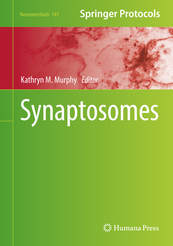
My book of synaptosome protocols published in the Springer Nature series of NeuroMethods series.
"This volume describes techniques to make synaptosomes, and discusses numerous ways that synaptosomes are used to study and answer diverse questions about synapses. After examining the history that led to making synaptosomes, the chapters delved into its important as a tool to explore synaptic connections. Some of the topics covered in this book are: synaptosome bioenergetics and glutamate release; affinity proteomics for interactome and phosphoproteome screening in synaptosomes; isolation of highly purified and functionally active synaptic mitochondria; and profiling of microRNA and protein from purified synaptoneurosomes in a neurodegenerative disease model. In Neuromethods series style, chapters include the kind of detail and key advice from the specialists needed to get successful results in your laboratory.
Cutting-edge and thorough, Synaptosomes is a valuable resource for any researcher interested in learning more about this developing field."
"This volume describes techniques to make synaptosomes, and discusses numerous ways that synaptosomes are used to study and answer diverse questions about synapses. After examining the history that led to making synaptosomes, the chapters delved into its important as a tool to explore synaptic connections. Some of the topics covered in this book are: synaptosome bioenergetics and glutamate release; affinity proteomics for interactome and phosphoproteome screening in synaptosomes; isolation of highly purified and functionally active synaptic mitochondria; and profiling of microRNA and protein from purified synaptoneurosomes in a neurodegenerative disease model. In Neuromethods series style, chapters include the kind of detail and key advice from the specialists needed to get successful results in your laboratory.
Cutting-edge and thorough, Synaptosomes is a valuable resource for any researcher interested in learning more about this developing field."

